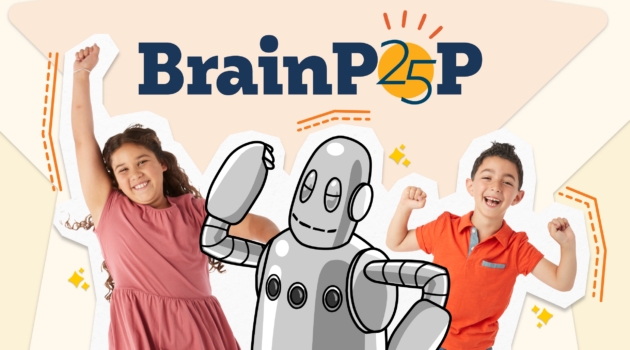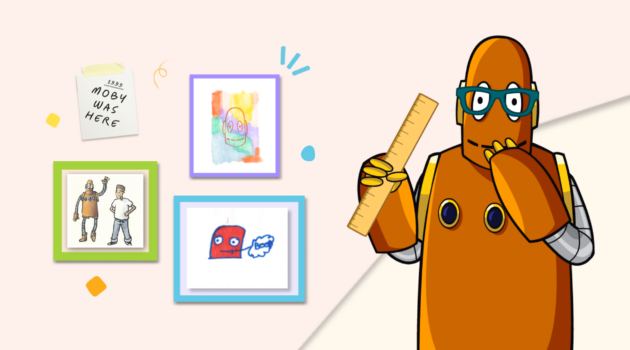Teaching Strategies
Why Middle Schoolers Need Brain Breaks More Than Ever

Kids of all ages need breaks, especially your middle school students. Naturally, pre-teens and teens are going through many changes, like shifts in emotional, mental, and developmental growth. They need the time and space to take a break to connect the dots in their learning. Learn more from BrainPOPers about brain breaks for middle school students that you can start in your classroom today.
Five Brain Breaks Ideas for Middle School Students
Middle school students may need a minute, or five minutes, to fully get ready to start that lesson. There are quite a few distractions in and outside the classroom. Whether it’s the start of class or a break in between lessons, no brain break is too small or too big.
Research “suggests that the time of day may play a role in your student’s performance and lack of focus.” So, our former educators and administrators have some tips to help get you started.
Consider the following:
1. Quiet music
2. Simple yoga stretches
3. Dance break
4.Trivia Games
5. Meditation exercises
Why are brain breaks important for middle school students?
Have you tried to do too many back-to-back tasks? You may feel stumped, sluggish, or can’t get started. A break may help you get back on track. Well, middle school-aged kids are no exception. Sometimes, you need to find that minute to capture your student’s attention.
“Being able to find moments to re-energize and refocus is so important. This is a skill we as adults do all the time, and we find the moments to give our brains a break that works best for us, so we should allow our pre-teens and teenagers to do the same. Recognizing when your brain needs a break is a vital life skill.” – Nicolina Abruzzese, BrainPOP Regional Sales Manager
Brain breaks allow students to rest their brains
Middle school is a new experience; some may need time to transition to their new environment, class, or schedule. “Middle school is hard! New expectations may differ from elementary school. Emotions tend to run higher in middle school. When teachers implement brain breaks, students can get away from the frustrations of the moment–whether it’s a hard task, a challenging concept, or tiffs with friends. These brain breaks allow students to focus on something else and let their brains rest for a moment or reengage in different ways. As students have a break, they tend to come back to the task at hand with more focus and brighter energy!” – Melissa Prescott, BrainPOP Regional Sales Manager
Brain breaks help prevent ‘checking out’ of class
It doesn’t take much for a student to start to feel the effects of checking out of class or begin to feel the onset of burnout. Consider small efforts to help put a boost back in their day. “Try to think about sitting through a regular school day as an ADULT. Sitting in a meeting without breaks is hard enough as an adult, but imagine it as an 11-year-old. Students are more likely to check out or burn out during lessons without breaks. In short, a 5-minute break can save your entire 45-minute lesson.” – Jamie M, BrainPOP Account Manager
Brain breaks can help recenter middle school students
A few moments of calm can help add clarity and focus to simple and even advanced tasks. “When I taught middle school Intensive Reading and ELA, I successfully taught kids simple yoga poses. I am no yoga expert, but even getting my middle school students to stretch was important when working on tough concepts like writing and revising essays. My classroom was tiny, but I had students push all the desks to the perimeter while I cued up soothing music. This 2-3 minute break always helped recenter my students, especially when they were feeling frustrated with the task at hand.” – Melissa Prescott, BrainPOP Regional Sales Manager
Whether you’re implementing brain breaks for the first time or looking for new ways to engage your students, there’s never been a better time to try something new. Consider reviewing your schedule and finding new ways to incorporate breaks into structured lesson plans. For more on engagement, check out this classroom management guide.
Activity-infused brain breaks for middle school students can boost engagement
Naturally, all students have unique experiences and opinions and middle schoolers aren’t known to be quiet about them. Taking the time to understand what your students are interested in can help boost productivity and learning.
Also, different types of brain breaks may help with your classroom engagement through activities-based experiences. If you need help getting started with a brain break with your middle school class, consider going right to the source and asking your students. For instance, giving students choices can help them feel empowered to make decisions that feel right for them.
Jamie M, BrainPOP’s Account Manager, dives into some options below:
Consider the following activities for middle school brain breaks:
- Break choice: Give students a choice between 3-4 different break activities. For example, try a break where students can draw, write, and do a crossword puzzle. Given the opportunity, students appreciate having the choice in how they spend their free time.
- Group games: Try playing games like four corners in class. It’s a quiet game, doesn’t disturb other classes, but gets kids up and moving around. Consider additional silent activities like bingo, if students choose not to play.
- Individualized breaks: Give your students five minutes and they can decide how they work independently. Consider printing out break cards and handing them out to the class.
Free download: grab your printable brain break cards here.
Brain breaks for middle school students can inspire and boost learning
Whether you’re looking to start a lesson, boost the lull in the day, or add some calm zen to the end, you can’t go wrong with adding a brain break for your middle school classroom. Bring the idea to your class, jot down their ideas, and watch as the inspiration and learning transform the space. For more on breaks, check out brain breaks for elementary students.
Kelli Rascoe is a Sr. Content Strategy Manager at BrainPOP. She has nine years of experience in writing, content marketing, and strategy for tech and Fortune 500 brands. She is also the momma to a princess scientist and a pack of rescue pups.






